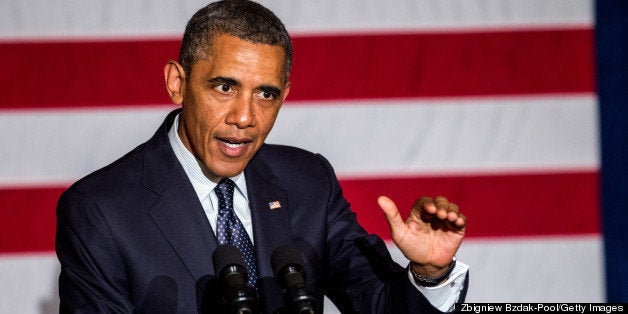
More than 120 health insurance companies have applied to sell coverage through federally run marketplaces under President Barack Obama's health care reform law next year, according to a memorandum released by the administration on Thursday.
The federal government is wholly or partially operating so-called health insurance exchanges in 34 states, while 17 states will manage their own. People who don't get health benefits at work or who are employed by small companies can begin shopping on Oct. 1 for coverage that will take effect next year. The online or paper application process also will be the means by which individuals determine whether their incomes make them eligible for Medicaid benefits or tax credits to defray the cost of private health insurance.
The competitive marketplace envisioned by the health care reform law is a significant departure from the status quo for individuals and small businesses, in which one or two companies typically control a large share of the market.
Obama has emphasized that the health care reform law will increase competition among health insurance companies for individuals and small businesses by introducing new health insurance offerings to the market. Although the federal government hasn't completed contracts with health insurers under the law, the early signs are positive, according to senior administration officials who briefed reporters at the White House on the condition they not be named or quoted.
The administration memo includes preliminary findings from about 19 states, including some that are operating their own health insurance exchanges. Administration officials acknowledged that the number of health insurance companies and the variety and quantity of health plans available could be different than the early signs suggest and will vary from state to state.
Final information about coverage options and monthly premiums won't be disclosed until the contracting process with the Department of Health and Human Services is complete in September, according to the memo. The Congressional Budget Office estimates that 7 million people will be enrolled in health insurance through the exchanges next year, and 24 million will be enrolled by 2023.
In the 19 states included in the administration's analysis, about nine in 10 will allow consumers to select from among at least five health insurance companies, according to the memo. At least one company wants to enter a state where it currently does not do business in about three-quarters of the states where the federal government will oversee a health insurance exchange, the administration reported based on preliminary information. Of the health insurers that applied to participate in federally run exchanges, one-fourth haven't offered plans to individuals before, the administration said.
The current health insurance market for individuals and small companies isn't characterized by choice. In 46 states, two health insurance companies have at least half of the customers in this segment of the market, according to the administration memo, which cites 2011 data from the National Association of Insurance Commissioners. Two companies cover more than 85 percent of individuals who buy their own health insurance in 11 states. In 29 states, a single company has more than half of the customers.
In addition to touting the number of health insurance companies seeking to do business with federally run exchange marketplaces, the Obama administration said that most people shopping for individual coverage will be able to choose from multiple products. Each health insurance company that participates in an exchange will sell an average of 15 different products in a state, according to the memo.
On top of the state-by-state contracting being conducted by the Department of Health and Human Services, the federal government is negotiating with health insurance companies that want to offer the same products in multiple states. More than 200 so-called multi-state plans are being vetted by the Office of Personnel Management, the agency that oversees federal employee benefits. According to the memo, multi-state plans will be sold on exchanges in at least 31 states next year and will expand nationwide by 2017.
Several states already have disclosed information about the health insurance products that will be available to their residents on the exchanges next year, and the results are mixed.
Residents of California and Maryland will have access to 13 health insurance companies, for example. But in New Hampshire, the only insurer slated to participate in the exchange is WellPoint subsidiary Anthem BlueCross BlueShield, which already is the state's market-share leader.
Likewise, state reports about health insurance premiums under Obamacare vary.
California's premiums will be lower than expected, though some people will pay more. In Oregon, some insurers are reducing their bids to compete for customers. But in states like Rhode Island and Maryland, some insurers are seeking double-digit rate increases that they partially attribute to health care reform rules, such as mandated benefits like maternity care and prescription drugs, limitations on charging older customers higher prices, and a prohibition against excluding people or hiking their rates because they have pre-existing conditions.
Under the health care reform law, individuals and small businesses will have access to five categories of health insurance with different levels of coverage. Four are named after precious metals -- bronze, silver, gold and platinum -- to indicate the amount of health expenses they will cover and the expected monthly price. Less costly so-called catastrophic health insurance that offers minimal coverage will be available to people younger than 30. Health insurers must offer at least one silver and one gold plan to participate in any exchange.
The law also provides varying degrees of financial assistance based on income. A single person who earns less than 133 percent of the federal poverty level, which is $14,582 this year, will be eligible for Medicaid benefits in states that opt to expand the program under Obamacare. Tax credits will be provided for private health insurance to people who earn between the poverty level, which is $11,490 for an individual this year, and four times that amount. Tax credits can't be applied to the catastrophic plans for young adults.
Read the full memo below:

